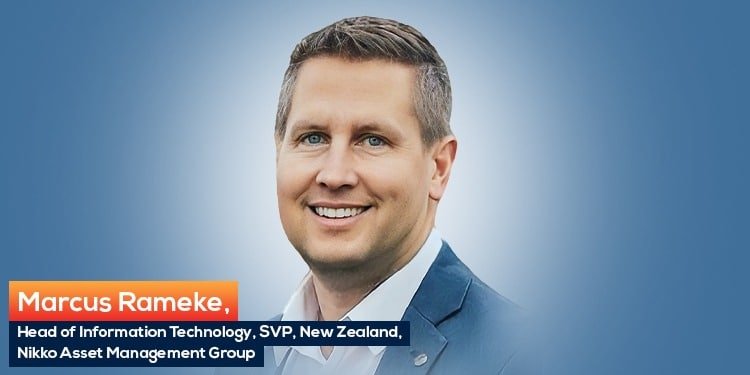Building robust technology solutions has always been seen as an achievement, but an equally important aspect often overlooked is the decommissioning process. Embracing a sustainable mindset that focuses on minimizing risk and reducing the attack surface profile can bring immense satisfaction to organizations. It is a rewarding journey of building and decommissioning technology solutions, emphasizing the concept that less is indeed more in the world of IT security.
In digital transformation, the stakes are high, and the pace is intense. A key characteristic of transformation is the magnitude of change in terms of both depth and breadth. It is a journey that is designed to achieve high impact at two levels – individual and organizational. And on top of that in this fast-paced digital landscape, the field of cybersecurity plays a critical role in safeguarding sensitive information and protecting organizations from cyber threats.
When it comes to technology solutions, organizations invest significant time, effort, and resources into developing robust infrastructures. The initial building process sets the foundation for a secure environment, whether it’s implementing firewalls, intrusion detection systems, servers, or access controls. The satisfaction derived from constructing a fortified defense against cyber threats cannot be understated. Knowing that critical data is protected, and potential vulnerabilities have been addressed instills a sense of accomplishment and confidence.
However, it is crucial to recognize that technology landscapes are constantly evolving, and what is secure today may not be tomorrow. Thus, maintaining a proactive mindset is essential. This is where the concept of risk comes into play.
While building technology solutions is rewarding, a forward-thinking approach requires equal consideration for the decommissioning process. Decommissioning involves retiring outdated systems, removing unnecessary software, and eliminating outdated protocols that may pose security risks. It is responsible for streamlining an organization’s IT infrastructure, reducing the attack surface, and minimizing potential vulnerabilities.
Adopting a mindset that “less is more” in the realm of IT security promotes sustainability and resilience. By decommissioning obsolete technologies, organizations can effectively manage risks and reduce the chances of cyberattacks. As cybercriminals constantly seek new entry points, removing outdated systems helps eliminate potential weak links that may be exploited.
Achieving Environmental Sustainability
Moreover, sustainability extends beyond risk reduction. Decommissioning outdated technology not only enhances security but also contributes to environmental sustainability. Sustainability is part of everything we do. Aging hardware and software consume unnecessary power and resources, ultimately increasing carbon footprints. By decommissioning and recycling obsolete systems responsibly, organizations can align their cybersecurity efforts with sustainable practices, minimizing their environmental impact.
Some organizations have achieved great sustainability results by using a combination of cloud and hyper-converged infrastructure as an example that provides huge electricity savings, due to several factors such as smart storage efficiency storage – savings of up to 98% – that equal fewer storage units required and with flash-based solid-state drives – or SSDs – that use less than 50% of the power consumption of traditional storage hard drives.
Hyper-converged infrastructure collapses the stack by removing silos, and it uses less hardware to support the workloads on HCI vs. Traditional, Three-Tier Architecture e.g. using 3 units instead of 16 units to achieve the same results, and because there is less hardware, less cooling is required, which also reduces power consumption.
The cloud is a remarkable tool that champions environmental sustainability. By replacing traditional on-premises servers and solutions, it reduces energy consumption and carbon emissions. Cloud service providers can optimize resource allocation, maximizing the utilization of hardware and minimizing energy waste. This streamlined approach significantly reduces the carbon footprint associated with data storage and processing.
Furthermore, the cloud enables scalability and elasticity, allowing organizations to scale their computing resources up or down as needed. This flexibility eliminates the need for organizations to maintain excess hardware capacity that often remains underutilized. As a result, less energy waste is generated contributing to a more sustainable way to operate your business. Cloud-based collaboration and communication solutions also minimize the need for extensive travel, further reducing our carbon footprint.
Cloud solutions offer a multitude of environmental benefits. From energy conservation and reduced energy waste to fostering remote work and in some ways supporting renewable energy. Embracing the cloud not only enhances operational efficiency but also demonstrates a commitment to preserving our planet for future generations. By harnessing the power of the cloud, we can pave the way towards a more sustainable and greener future.
Embracing the Satisfaction of Decommissioning
While the process of decommissioning technology solutions may not be as glamorous as building them, it offers its own unique rewards. It enables organizations to stay agile, adapt to changing threat landscapes, and focus on maintaining a lean and secure IT infrastructure. Decommissioning empowers cybersecurity professionals to reassess the organization’s needs, identify areas of improvement, and optimize their defenses.
Furthermore, the satisfaction of decommissioning lies in the knowledge that potential risks have been mitigated. Removing outdated software and hardware reduces the attack surface, making it more challenging for cybercriminals to breach an organization’s defenses. This act of responsible technology management not only protects sensitive data but also enhances an organization’s reputation and trustworthiness.
Building robust technology solutions is undoubtedly a significant achievement in the realm of cybersecurity. However, the journey does not end there. Embracing a sustainable mindset that values the decommissioning process brings equal rewards. By reducing the attack surface, managing risk, and embracing the concept of “less is more,” organizations can ensure their IT infrastructure remains resilient and secure. The satisfaction derived from minimizing potential vulnerabilities and contributing to both cybersecurity and environmental sustainability is boundless. Therefore, let us recognize the importance of decommissioning and embrace it as an integral part of the rewarding cybersecurity journey.
Other articles from the author:
Journey to the Cloud: Navigating the Transformation
Explore similar articles:
Embracing Non-Controllables for Business Success
Enhancing Technology-Enabled Business Transformation in Financial Services

I am an evangelist for learning and an advocate for change in the information technology sector. Currently, I hold the position of Head of Information Technology and Senior Vice President at Nikko Asset Management New Zealand, a role I was appointed to in 2018. My focus is on managing all aspects of IT for Nikko AM NZ, with the goal of transforming the business from a traditional IT setup to a modern, secure, flexible, and scalable environment. With a cloud-first approach, I’m working to enhance mobility and align with both global and local business requirements.
With over 20 years of industry experience, I’ve had the privilege of working in Sweden, England, and, for the past 13 years, in New Zealand. I’m committed to developing solutions that boost efficiency while consistently meeting deadlines and staying within budget.








